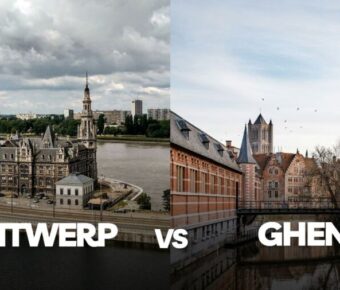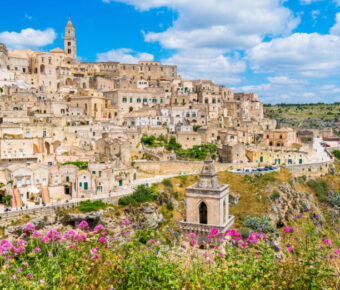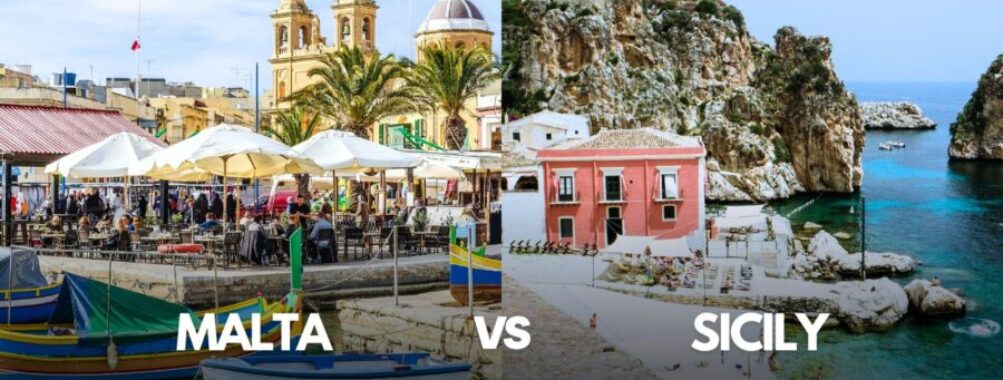
Malta vs Sicily: 5 Essential Differences for Your Mediterranean Escape
Dreaming of a Mediterranean escape? Malta and Sicily sit just 60 miles apart but offer surprisingly different experiences.
Malta boasts a compact, easily navigable island with clear waters and historic sites spanning 7,000 years. Meanwhile, Sicily charms visitors with its greater diversity of landscapes, superior cuisine, and authentic Italian character.
I’ve spent time on both islands and found each has a distinct appeal. Malta packs incredible history into a tiny space where English is widely spoken, making it tourist-friendly. The island has beautiful blue waters but limited sandy beaches compared to Sicily’s options.
Sicily requires more planning and likely a rental car to properly explore its volcanoes, ancient ruins, and charming towns. The food alone might tip the scales—Sicily’s culinary tradition far outshines Malta’s offerings, with fresh seafood, arancini, and cannoli that will make your taste buds dance.
Table of Contents
- Geography and Climate
- Islands and Archipelagos
- Major Mountains and Volcanoes
- Historical and Cultural Significance
- UNESCO World Heritage Sites
- Ancient Ruins and Archaeology
- Cities and Urban Exploration
- Capital Cities
- Historic Towns
- Coastal Attractions and Beaches
- Pristine Beaches
- Harbors and Fishing Villages
- Gastronomy and Culinary Experiences
- Outdoor Activities and Adventure
- Hiking and Natural Parks
- Diving and Water Sports
- Travel Essentials and Tips
- Accommodation Recommendations
- Transport and Connectivity
- Frequently Asked Questions
- What are the key differences in tourist attractions between Malta and Sicily?
- How does the cultural heritage of Malta compare to that of Sicily?
- What are the seasonal weather variations for travelers considering Malta or Sicily in October?
- Can you provide an ideal 7-day itinerary for a combined visit to Malta and Sicily?
- What are the travel and transport options available between Malta and Sicily?
- How do the culinary experiences in Malta differ from those in Sicily?
- Book Your Dream Experience
- More Travel Guides
Geography and Climate

Malta and Sicily share the sparkling waters of the Mediterranean Sea, but their landscapes and weather patterns offer distinct experiences for visitors. While one is a tiny archipelago of limestone islands, the other is Italy’s largest region with dramatic mountains and active volcanoes.
Islands and Archipelagos
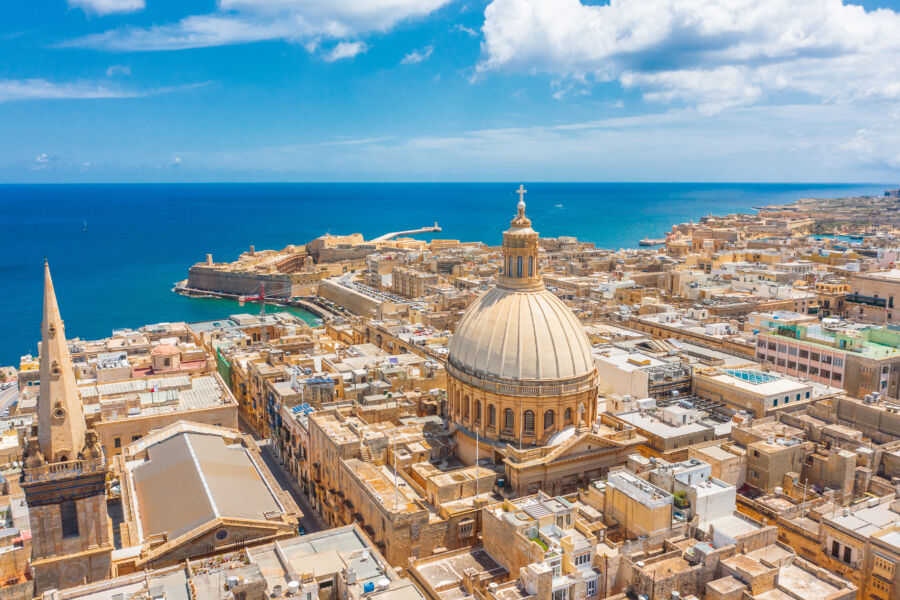
Malta is a small archipelago covering just 316 square kilometers, about 81 kilometers south of Sicily. The nation consists of three main inhabited islands – Malta (the largest), Gozo, and Comino – plus several tiny uninhabited islets. Malta’s compact size makes exploring extremely easy, with most attractions accessible via public transport or short ferry rides between islands.
Sicily, in contrast, is massive compared to its southern neighbor. At 25,711 square kilometers, it is the largest island in the Mediterranean and offers much more varied landscapes. Beyond the main island, Sicily’s territory includes several stunning archipelagos.
The volcanic Aeolian Islands north of Sicily feature dramatic landscapes and black sand beaches. The Egadi Islands to the west and the Pelagian Islands to the south add to Sicily’s diverse island offerings.
Major Mountains and Volcanoes
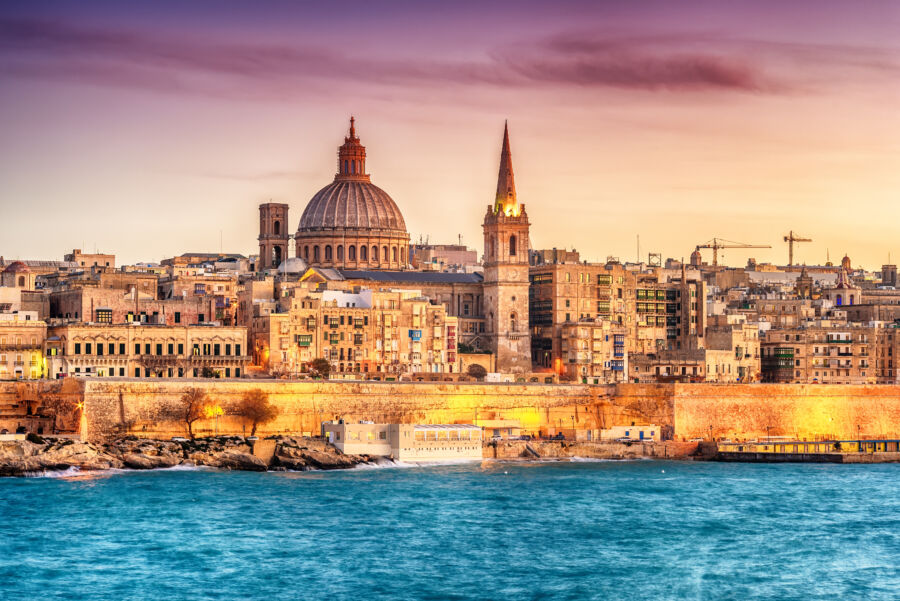
Malta’s landscape is notably flat compared to Sicily. The island nation has no mountains to speak of, with its highest point being Ta’ Dmejrek at just 253 meters above sea level. The Maltese islands are primarily composed of limestone plateaus and rolling hills, giving the landscape a golden-tan appearance.
Sicily boasts impressive mountain ranges and the spectacular Mount Etna, Europe’s tallest and most active volcano, at 3,329 meters. Etna’s frequent eruptions have shaped Sicily’s landscape and created fertile soil that supports the island’s agriculture.
Beyond Etna, Sicily features the Nebrodi, Madonie, and Peloritani mountain ranges, offering dramatic hiking landscapes. The Sicilian interior is rugged and mountainous, creating diverse microclimates throughout the island and contributing to Sicily’s lush vegetation compared to Malta’s more arid environment.
See Related: Puglia vs Sicily: Surprising Differences Between Italy’s Sun-Soaked Southern Gems
Historical and Cultural Significance
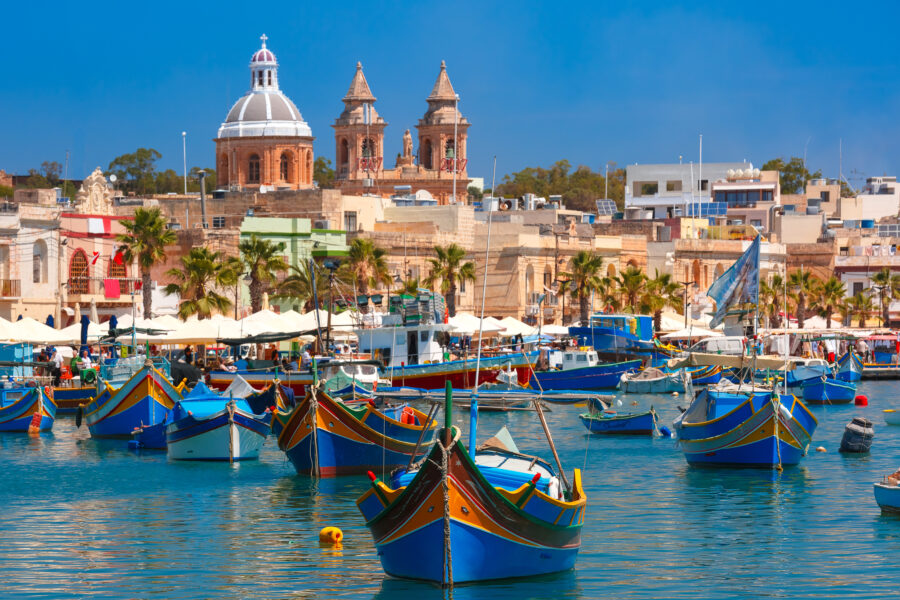
Malta and Sicily boast incredible historical depth, having been shaped by numerous civilizations throughout the centuries. These Mediterranean islands preserve their rich heritage through remarkable archaeological sites and beautifully preserved historic cities.
UNESCO World Heritage Sites

Malta packs an impressive punch with three UNESCO sites despite its tiny size. The capital city of Valletta, built by the Knights of St. John in the 16th century, is a stunning fortress city with gorgeous baroque architecture. The entire city is a UNESCO site!
Malta’s prehistoric temple complexes are mind-blowing – they’re older than the Egyptian pyramids! These megalithic temples date back to 3600-2500 BCE and represent some of humanity’s earliest free-standing stone buildings.
Sicily counters with an equally impressive lineup of UNESCO treasures. The Valley of the Temples near Agrigento features some of the best-preserved Greek temples outside Greece.
The massive Temple of Concordia still stands nearly intact after 2,500 years! Sicily also boasts UNESCO recognition for the Late Baroque Towns of the Val di Noto and the Arab-Norman architecture in Palermo.
Ancient Ruins and Archaeology
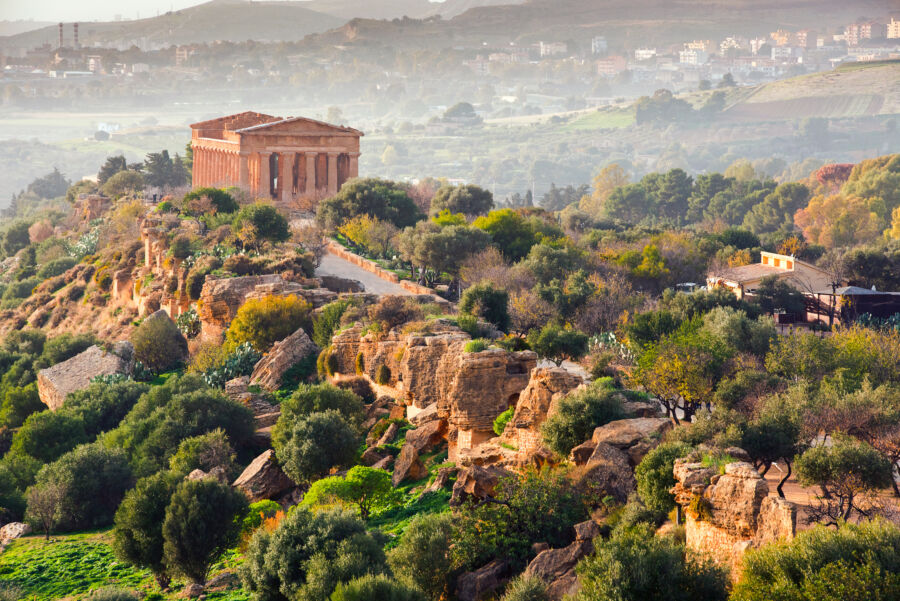
Malta’s archaeological significance can’t be overstated. The Ħal Saflieni Hypogeum, an underground prehistoric burial site, shows remarkable engineering skills from 4000 BCE.
Mdina, Malta’s ancient walled city, offers a journey through time with its mix of Norman and Baroque architecture. Walking its narrow streets feels like stepping back centuries!
Sicily’s archaeological treasures span multiple civilizations. Agrigento’s Valley of the Temples showcases magnificent Greek architecture, with seven temples built between 510 and 430 BCE.
Once a powerful Greek city-state, Syracuse contains an impressive Greek theater, a Roman amphitheater, and ancient quarries. The island’s strategic position made it attractive to Phoenicians, Greeks, Romans, Byzantines, Arabs, and Normans – each leaving distinctive marks. Both islands reward history buffs with layers of civilizations to discover, from prehistoric settlements to medieval fortresses and baroque splendor.
Cities and Urban Exploration
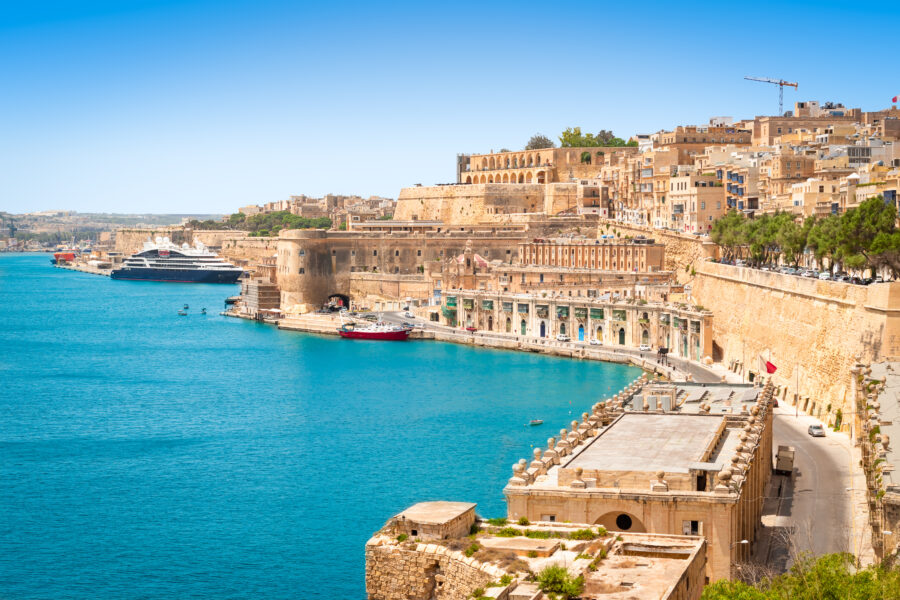
Sicily and Malta offer fascinating urban landscapes with distinctive architecture and rich histories. Each destination features captivating cities that reflect their unique cultural heritage, from grand baroque buildings to narrow medieval streets.
Capital Cities
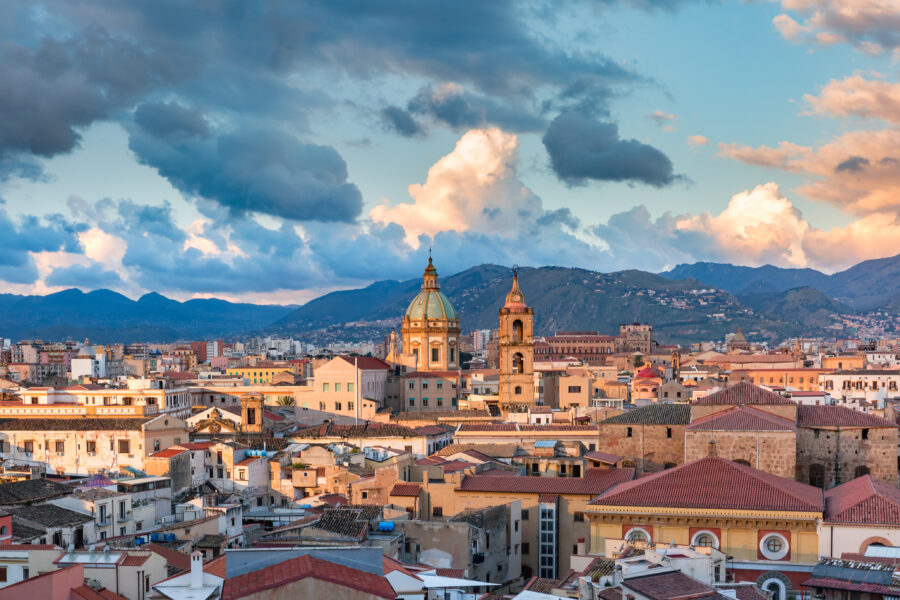
Palermo, Sicily’s vibrant capital, is a chaotic yet charming city where cultures collide. The busy markets like Ballarò and Vucciria showcase the city’s Arab-Norman influences and buzzing street life. Don’t miss the stunning Palatine Chapel with its glittering golden mosaics.
Valletta, Malta’s compact capital, packs incredible history into its tiny 0.3 square miles. Built by the Knights of St. John, the city is a UNESCO World Heritage site.
The grid-pattern streets make it easy to explore on foot, and the golden limestone buildings glow beautifully at sunset. Both capitals offer excellent museums, but Valletta’s Grand Harbor views and well-preserved fortifications give it a slight edge for urban explorers looking for walkability and concentrated historic sites.
Historic Towns
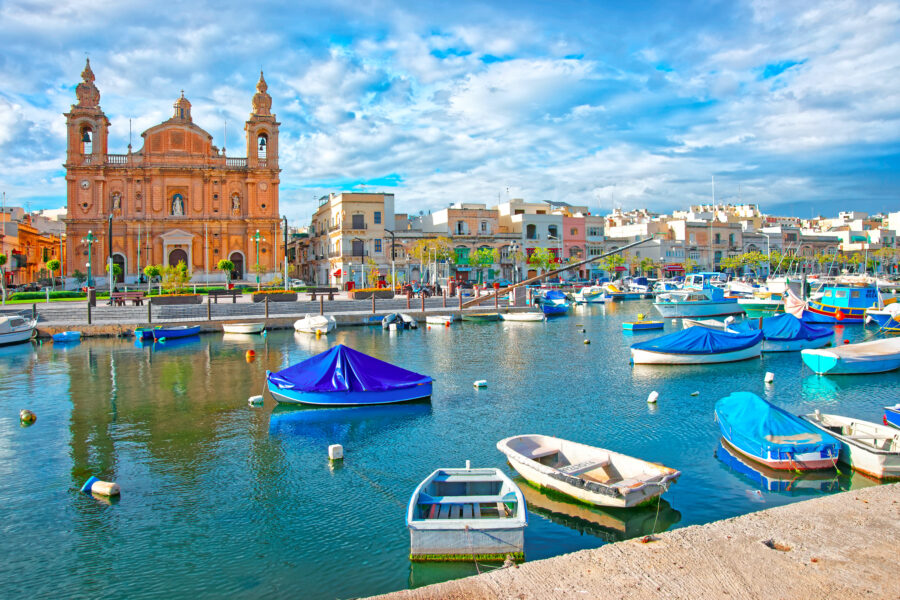
Sicily boasts several enchanting historic towns. Ortigia, the ancient heart of Syracuse, sits on a small island connected by bridges to the mainland. Its narrow lanes lead to stunning piazzas and the Temple of Apollo, one of Sicily’s oldest Greek ruins.
Ragusa Ibla charms visitors with its baroque architecture, rebuilt after a devastating 1693 earthquake. The town tumbles down a hillside in a photogenic jumble of churches and palaces.
Mdina (the “Silent City”) offers a magical step back in Malta. This medieval walled town allows no cars within its gates, creating a peaceful atmosphere as you wander its lamp-lit streets.
Once Malta’s capital, Mdina now houses about 300 residents and features well-preserved Norman and baroque architecture. Both regions’ historic towns offer authentic experiences, but Malta’s Mdina provides a more concentrated and pedestrian-friendly historic experience.
Coastal Attractions and Beaches
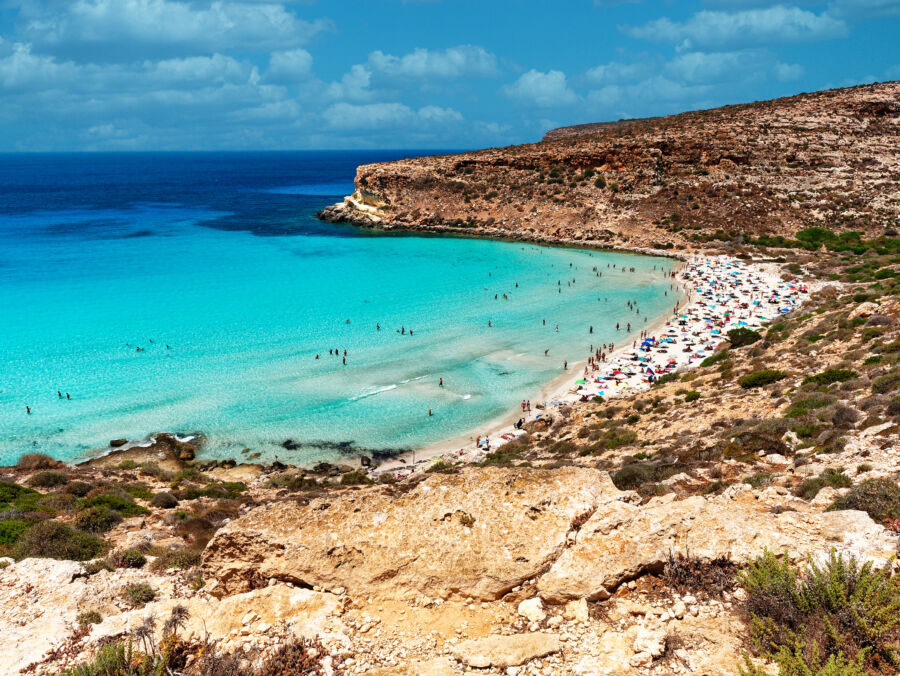
Malta and Sicily offer stunning Mediterranean coastlines but distinctly different beach experiences. Malta’s compact size means you’re never far from the sea, while Sicily’s diverse shoreline stretches hundreds of miles with varying landscapes.
Pristine Beaches
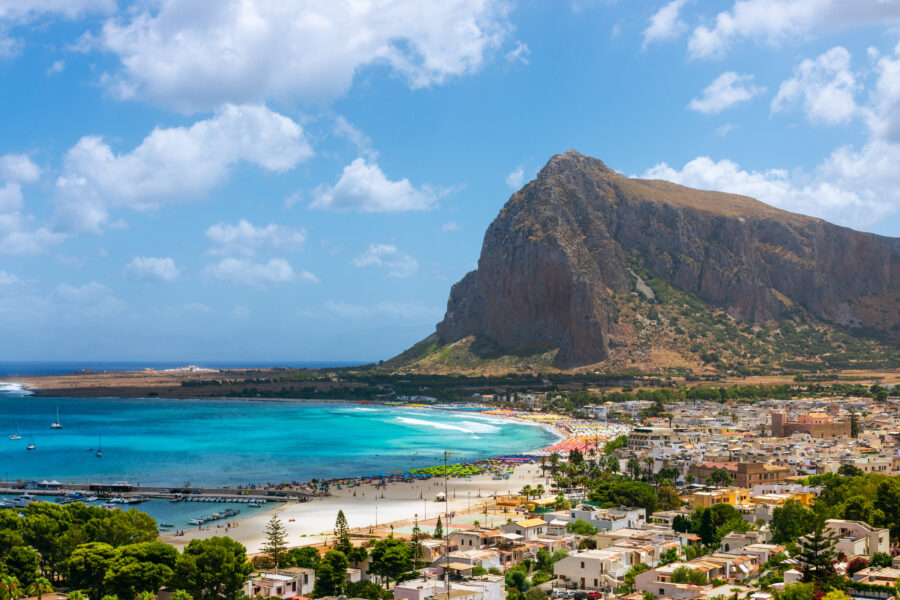
Sicily wins the beach competition with its abundance of sandy shores. The island boasts gorgeous spots like San Vito Lo Capo with white sand and turquoise waters.
Mondello Beach near Palermo offers a lively atmosphere with crystal-clear water that is perfect for swimming. The beaches around Taormina combine dramatic scenery with inviting waters.
Malta’s beaches are smaller but still charming. Golden Bay and Mellieħa Bay provide the island’s best sandy beaches, though they can get crowded in summer. The Blue Lagoon on Comino Island (between Malta and Gozo) offers an incredible swimming spot with stunning azure waters.
Many visitors find that Malta’s rocky coastline offers excellent swimming access via ladders and platforms built into the rocks. These spots typically have clearer water than the sandy beaches!
Harbors and Fishing Villages
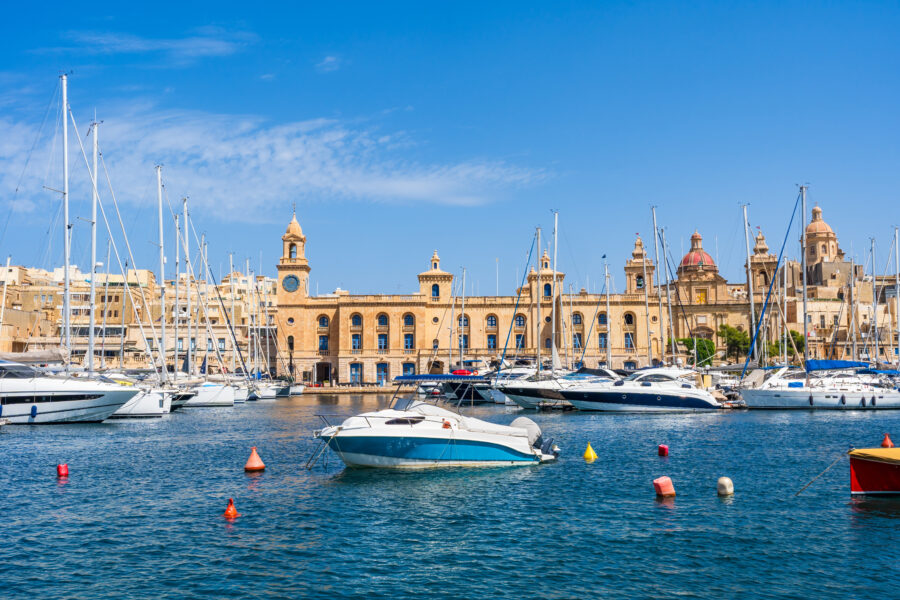
Malta’s Grand Harbor in Valletta is one of Europe’s most impressive natural harbors. Massive fortifications surround it, offering breathtaking views that showcase Malta’s maritime history. The harbor bustles with activity, from cruise ships to small fishing boats.
Marsaxlokk, in Malta’s southeast, is the quintessential Mediterranean fishing village. Its bay is filled with colorful traditional fishing boats called luzzus, painted in bright blues, yellows, and reds. The Sunday fish market here is a must-visit experience.
Sicily counters with charming fishing villages like Cefalù and Marzamemi. These picturesque spots feature narrow streets, small harbors filled with boats, and excellent seafood restaurants. Syracuse’s harbor blends ancient Greek ruins with maritime charm, while Taormina’s coast offers dramatic views with Mount Etna in the background.
Gastronomy and Culinary Experiences

Regarding food, Sicily and Malta each offer distinctive flavors that tell the story of their complex histories. Sicily shines with what many consider the best Italian cuisine, influenced by Greek, Arab, and Spanish traditions.
Sicilian dishes like arancini (fried rice balls), pasta alla Norma (eggplant pasta), and cannoli (sweet ricotta-filled pastries) have become world-famous. The island’s fertile volcanic soil produces extraordinary fruits, vegetables, and wines that form the backbone of its farm-to-table tradition.
While less internationally known, Malta’s cuisine offers its delicious treasures. The island’s signature dish is pastizzi, diamond-shaped pastries typically filled with ricotta or mushy peas.
Popular Dishes Comparison:
| Sicily | Malta |
|---|---|
| Arancini (rice balls) | Pastizzi (savory pastries) |
| Pasta alla Norma | Rabbit stew (Fenkata) |
| Cannoli | Ftira (Maltese bread) |
| Caponata (eggplant dish) | Lampuki pie (fish pie) |
Despite their differences, these Mediterranean neighbors share culinary elements like fresh seafood, olive oil, and local cheeses. Both embrace the Mediterranean diet philosophy, though with distinct interpretations.
Food lovers often note that Sicily offers more culinary variety and sophistication. The search results suggest that Italy’s food is “infinitely better” than Malta’s, though this is subjective. The good news for travelers is that English is widely spoken in both destinations, making navigating menus easy and asking locals for recommendations about the best places to eat.
See Related: Unforgettable Religious Tours in Italy: Transform Your Faith Journey in the Jubilee Year
Outdoor Activities and Adventure
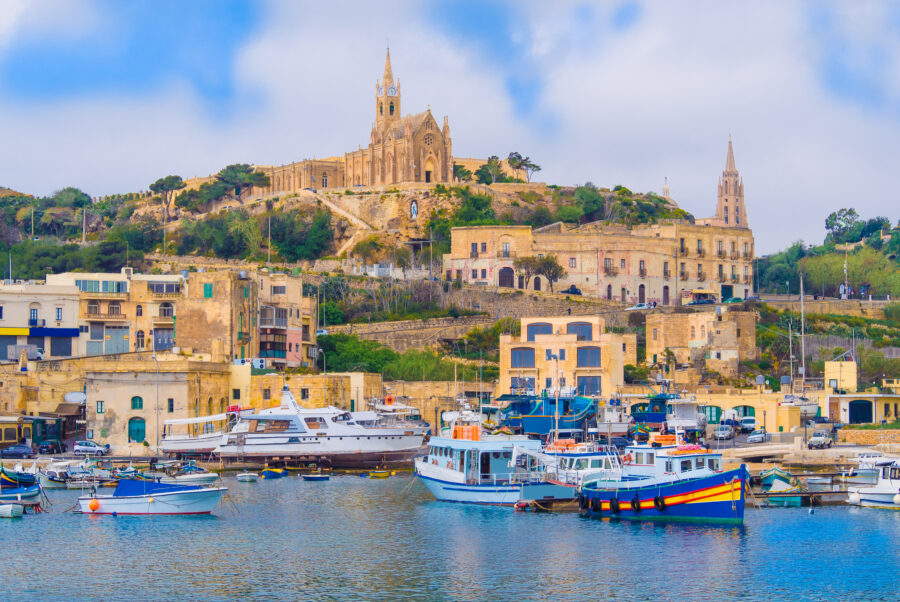
Both Malta and Sicily offer fantastic outdoor experiences for adventure lovers. These Mediterranean islands boast diverse landscapes perfect for exploring on land and sea.
Hiking and Natural Parks
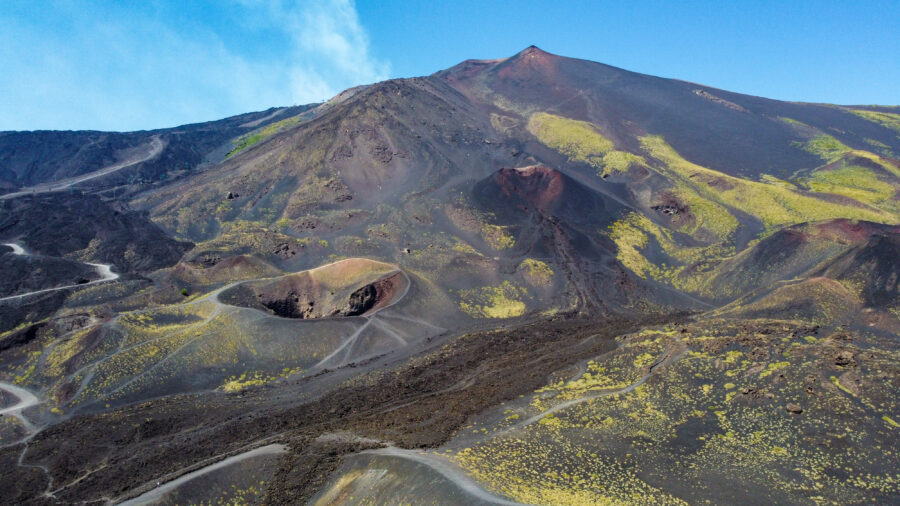
Sicily shines with its dramatic natural landscapes. Mount Etna, Europe’s tallest active volcano, provides unique hiking opportunities through lunar-like terrain and lava fields. The Zingaro Nature Reserve offers coastal trails with stunning sea views and hidden coves.
Malta’s smaller size doesn’t mean fewer hiking options. The Dingli Cliffs provide breathtaking coastal walks with panoramic Mediterranean views. The island’s rugged northern coastline features numerous walking trails past ancient ruins and dramatic rock formations.
Both destinations offer different hiking experiences. Sicily’s varied terrain includes mountains, volcanoes, and forests. Malta features more coastal paths with rocky landscapes and historical sites.
Diving and Water Sports
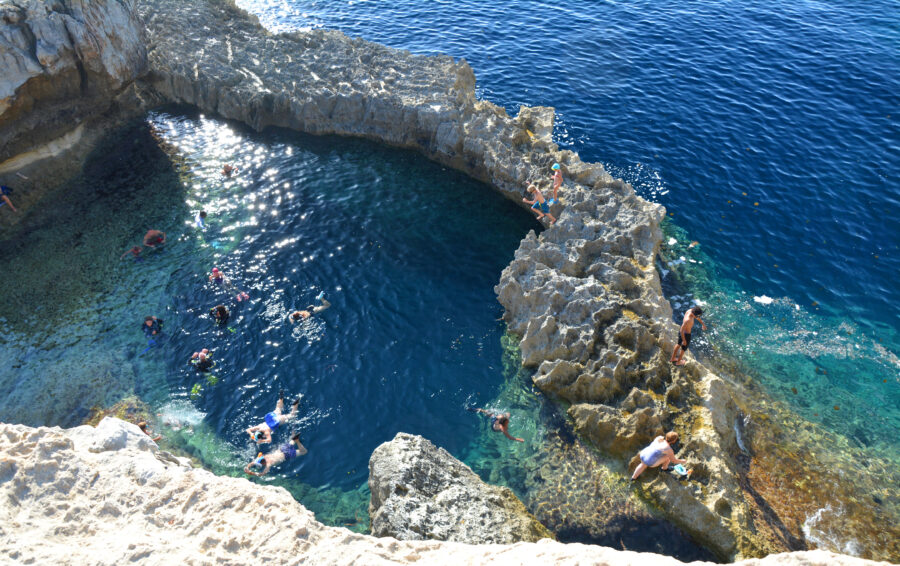
Malta ranks among Europe’s top diving destinations with exceptional underwater visibility. The Blue Hole in Gozo is a world-famous dive site, featuring natural rock formations and abundant marine life. The island also offers numerous shipwrecks for exploration.
Sicily’s underwater attractions include the Isola Bella marine reserve near Taormina, with crystal-clear waters perfect for snorkeling. The Aeolian Islands provide excellent diving experiences and have underwater volcanic features.
Both islands boast beautiful sandy beaches ideal for water sports. Sicily’s longer coastline offers more variety, from the golden sands of San Vito Lo Capo to the volcanic black beaches near Catania. Malta’s beaches, like Golden Bay and Mellieħa Bay, provide perfect spots for windsurfing, kayaking, and paddleboarding.
Travel Essentials and Tips
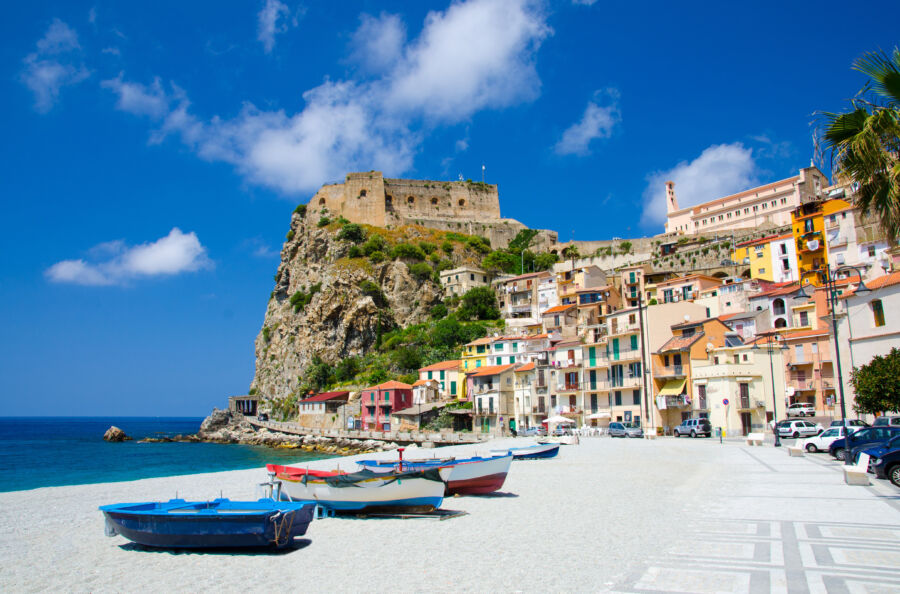
Planning your Mediterranean adventure requires knowing the practical side of both destinations. Both islands have unique requirements regarding where to stay and how to get around.
Accommodation Recommendations
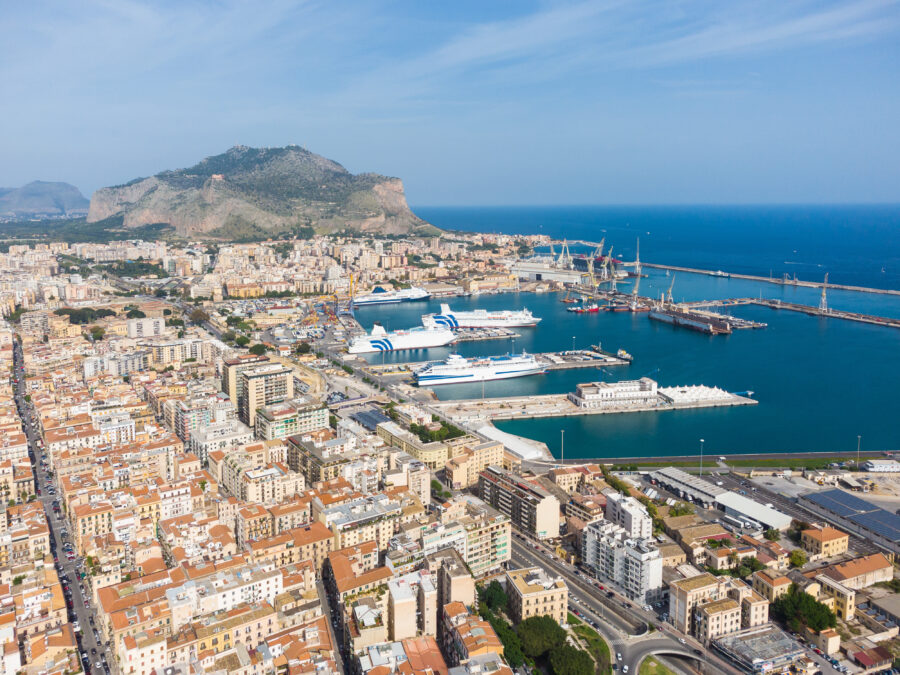
Malta offers a range of places to stay that fit different budgets. The St. Julian’s and Sliema areas are perfect for travelers who love being close to restaurants and nightlife. For a quieter stay, check out Mellieħa or the charming village of Marsaxlokk.
Sicily provides more varied options. In Palermo and Catania, you’ll find everything from budget-friendly hotels to luxury spots. The beach town of Cefalù blends history with stunning coastlines.
Solo travelers might prefer staying in hostels in both destinations. Malta’s hostels are mainly in St. Julian’s, while Sicily has them spread across major cities.
Price-wise, Malta tends to be slightly more expensive during peak season. Book at least 3-4 months ahead if traveling in summer to either destination.
Transport and Connectivity
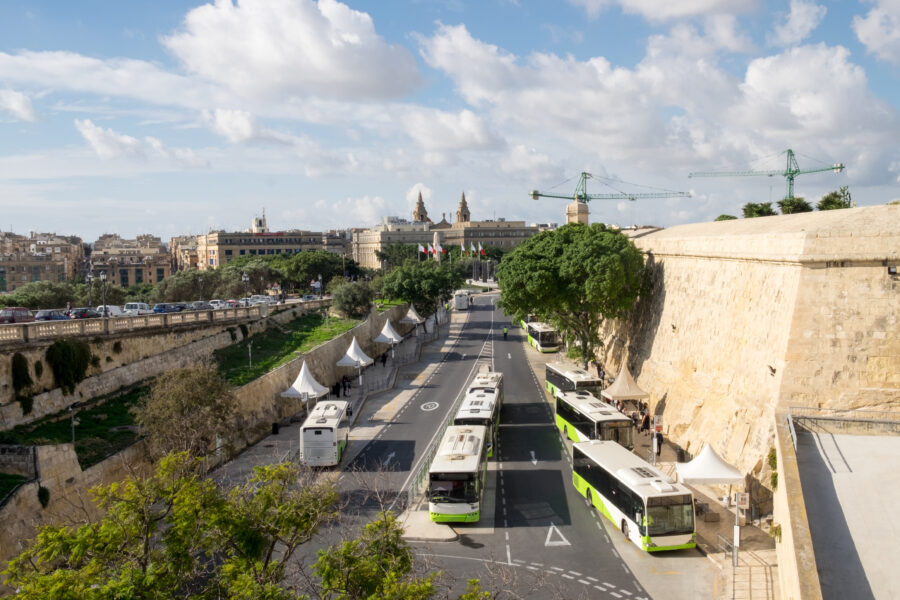
Getting between the islands is easy via ferry services that run daily during summer and less frequently in winter. The journey takes about 1.5-2 hours from Valletta to Pozzallo.
In Malta, public buses reach most attractions, and a weekly pass costs around €21. The buses’ compact size makes exploring easy, and taxis are reasonably priced for short distances.
Sicily requires more planning. Public transport works well in cities, but a rental car is best for exploring rural areas and small towns. Driving in Sicilian cities can be challenging, especially for first-timers.
Both islands have decent WiFi in urban areas. Malta generally offers better internet connectivity throughout the island than some remote parts of Sicily.
Ferry schedules change seasonally, so check times in advance. Booking tickets ahead is essential in summer as routes fill up quickly with tourists.
See Related: Tuscany vs Sicily: Which Italian Paradise Offers the Ultimate Cultural Experience?
Frequently Asked Questions
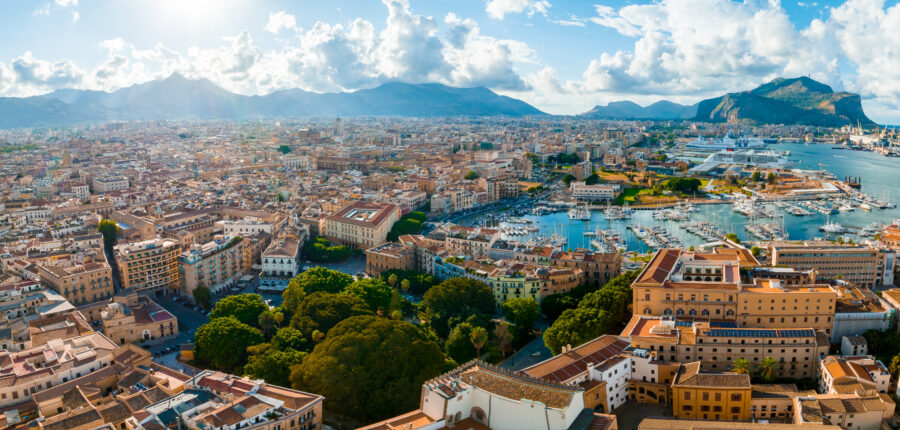
Travelers often have specific questions when deciding between Malta and Sicily. Below are answers to some common queries that can help you plan your Mediterranean adventure.
What are the key differences in tourist attractions between Malta and Sicily?
Malta offers a concentrated collection of historic sites, including the UNESCO-listed Valletta and prehistoric temples like Ħaġar Qim. The Blue Lagoon on Comino Island and the picturesque fishing village of Marsaxlokk are must-sees.
Sicily boasts more diverse attractions across a larger area. Mount Etna, Europe’s most active volcano, is a dramatic natural landmark.
The Valley of Temples in Agrigento and the Byzantine mosaics in Monreale Cathedral showcase Sicily’s rich historical tapestry. The scale differs significantly – you can explore most of Malta’s main attractions in 3-4 days, while Sicily would require at least a week to scratch the surface.
How does the cultural heritage of Malta compare to that of Sicily?
Malta’s cultural identity reflects its unique history as a strategic Mediterranean crossroads. The Maltese language combines Arabic with Italian influences, and British colonial touches are evident.
The Knights of St. John left an enormous architectural legacy in Malta, particularly in Valletta. Local festivals, especially the colorful village festas, showcase Malta’s distinctive blend of Catholic traditions and Mediterranean customs.
Sicily’s heritage feels distinctly Italian but with Greek, Norman, Arab, and Spanish influences. This creates an incredible mosaic of styles in architecture, food, and festivals. The island’s puppet theaters, ceramic traditions, and religious processions give visitors a glimpse into Sicily’s multifaceted cultural soul.
What are the seasonal weather variations for travelers considering Malta or Sicily in October?
October offers pleasant conditions in both destinations. Malta typically enjoys temperatures around 21-25°C (70-77°F) with about 6-7 hours of sunshine daily. The sea remains warm enough for swimming at around 23°C (73°F).
Malta’s rainfall increases slightly in late October, but extended downpours are uncommon. The shoulder season means fewer crowds but still-operational tourist services.
Sicily experiences similar temperatures in October, with more variation between coastal areas and inland mountains. Coastal regions stay warmer, while places like Mount Etna can be significantly cooler. Evening temperatures drop more noticeably in Sicily compared to Malta.
Can you provide an ideal 7-day itinerary for a combined visit to Malta and Sicily?
Days 1-3: Start in Malta. On day one, explore Valletta, including St. John’s Co-Cathedral and the Grand Harbour views.
Visit the ancient temples of Ħaġar Qim and the Blue Grotto. Day three, take a ferry to Gozo for the day.
Day 4: Take the morning ferry from Valletta to Pozzallo, Sicily (about 1.5-2 hours). Collect a rental car and drive to Syracuse for an afternoon exploring the historic Ortygia district.
Day 5: Visit the Valley of Temples in Agrigento and then drive to Palermo in the evening.
Days 6-7: Explore Palermo, including the Norman Palace and Monreale Cathedral. On your final day, make an excursion to the beach town of Cefalù or consider a trip to Mount Etna, depending on your interests.
This itinerary gives you a taste of both islands while minimizing travel time.
What are the travel and transport options available between Malta and Sicily?
Ferry services connect Malta and Sicily year-round, though schedules vary seasonally. The main route runs between Valletta and Pozzallo, with crossings taking approximately 1.5-2 hours on high-speed vessels.
Virtu Ferries is the primary operator. In peak season (summer), they offer daily services, while winter months see reduced schedules. Booking in advance is recommended, especially if traveling with a vehicle.
Flying between the islands is possible but typically requires connecting flights through mainland Italy, making it less practical than the direct ferry. However, flights between Malta and distant Sicilian cities like Palermo have improved.
How do the culinary experiences in Malta differ from those in Sicily?
Malta’s cuisine reflects its maritime heritage, with abundant seafood dishes. Traditional foods include rabbit stew (Venkata), pastizzi (savory pastries), and ftira (a ring-shaped bread). The dining scene tends to be more casual, with a mix of Mediterranean influences.
Sicilian cuisine is more varied and known globally for arancini, pasta alla Norma, and cannoli. The island’s culinary traditions benefit from excellent local produce, including pistachios from Bronte, blood oranges, and abundant seafood.
Wine experiences differ, too. Sicily boasts extensive vineyards producing internationally recognized wines from native grapes like Nero d’Avola.
Meanwhile, Malta’s wine industry is smaller but growing. Local varieties like Girgentina offer interesting tastings for visitors seeking something different.
